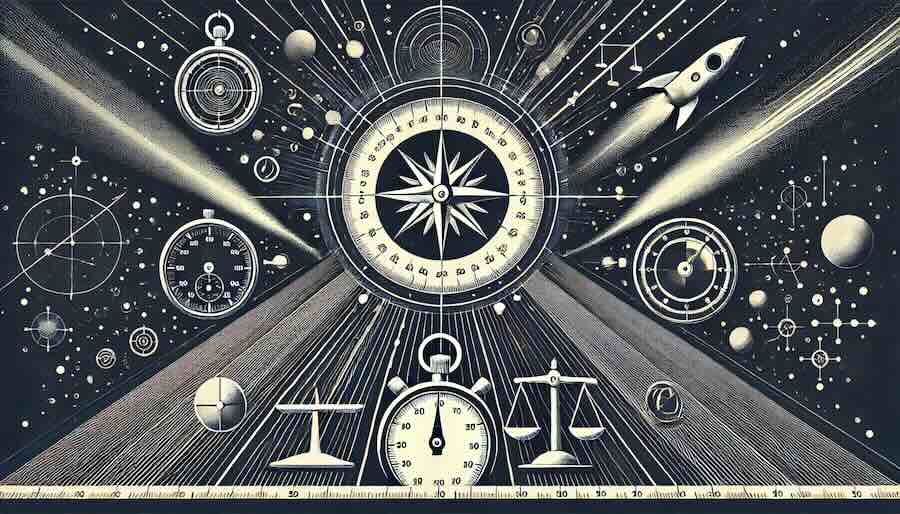Shoulders of Measurement Giants : Big
January 23, 2025

We Stand on the Shoulders of Measurement Giants
For centuries, humanity has refined the tools and theories that let us measure everything from Earth’s circumference to the boundaries of the observable universe. While the fundamental numbers keep getting more precise, we may be nearing a point where we’re polishing rather than breaking new ground. Here’s a brief outline of how we’ve come this far.
A Brief History of Measuring Our Universe
1. Earth’s Circumference
Eratosthenes of Cyrene (c. 276–194 BCE)
By tracking how shadows changed in Syene and Alexandria, Eratosthenes produced an impressively close estimate of Earth’s circumference—remarkably near today’s accepted figure.
2. Earth–Moon Distance
Aristarchus of Samos (c. 310–230 BCE)
Using lunar eclipses and geometry, he estimated the Moon to be 20 Earth radii away, undercutting the modern value of about 60 Earth radii.
3. Earth–Sun Distance (The Astronomical Unit)
- Aristarchus Again
Calculated the Sun’s distance by analyzing the Moon’s phase angles, arriving at 19 times the Earth–Moon distance—again an underestimate. - Transits of Venus (1761 & 1769)
Through parallax measurements during Venus’s passage across the Sun, astronomers refined the astronomical unit, thanks to pioneers like Edmond Halley.
4. Distances Within the Solar System
Giovanni Domenico Cassini (1672)
Measured Mars’s parallax at opposition, thus tightening our solar-system scale and giving us a more reliable cosmic yardstick.
5. Measuring Stellar Distances
Friedrich Bessel (1838)
He observed stellar parallax for star 61 Cygni, marking humanity’s first precise measurement to a star beyond our Sun—proof that planetary geometry could scale to interstellar realms.
6. Galactic and Extragalactic Distances
- Henrietta Swan Leavitt (1908)
Discovered the period–luminosity relationship for Cepheid variables, yielding a new “standard candle” for cosmic distance checks. - Edwin Hubble (1920s)
Used Cepheid variables to show that the Andromeda “nebula” was actually a distant galaxy, vastly expanding the known universe.
7. The Cosmic Distance Ladder
We now use a layered approach—parallax for nearby stars, Cepheid variables and Type Ia supernovae for mid-range objects, and redshift for the furthest galaxies. Each rung extends our reach into space.
From Eratosthenes’ shadow-based calculations to Hubble’s revelation that galaxies exist far beyond our own, each advance has chipped away at cosmic unknowns and redefined our sense of place. Are we now in an era of refining these distance measurements rather than making sweeping discoveries about scale? Perhaps so—but even refinements can open new windows on how the universe truly works.
| Related Blog Posts | Description |
|---|---|
| Our Minds Do Linear. The Universe Does Exponential. | Why human brains struggle to grasp cosmic scales and exponential growth. |
| Shoulders of Measurement Giants: Cosmic | How we measure the vast distances of the universe. |
| Shoulders of Measurement Giants: Small | From atoms to quarks—how we measure the very tiny. |
| Shoulders of Measurement Giants: Quantum | Does measurement itself break down at the quantum level? |
